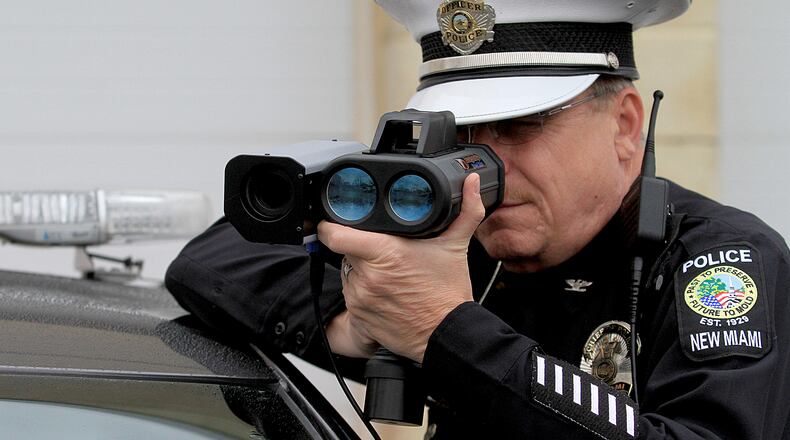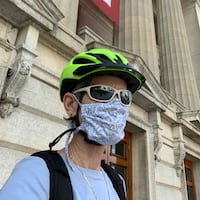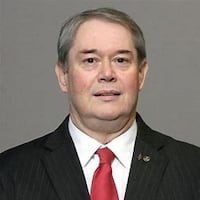The law ended Middletown’s more than 10-year run using the cameras. Despite the new ruling, City Manager Doug Adkins said, “We are not going to consider red light cameras in the future.”
EARLIER: Middletown deactivates 14 red light cameras
The city deactivated 14 red light cameras at eight intersections after the 2015 law.
Now, Middletown Police Chief Rodney Muterspaw — who said he was “not a big fan of the red light cameras” — said resources are needed more to fight crime.
“We have to dedicate an officer every day to review every violation, watch the videos, confirm the violation and send out. We don’t have the people to do that,” Muterspaw said. “We need our officers on the street and investigating crimes, not sitting at a desk watching for traffic violations.”
RELATED: 5 things to know about the New Miami speed camera lawsuit
Dayton issued the legal challenge, attacking three elements of the law:
• that a full-time police officer be posted at each camera in operation;
• that cities conduct a three-year traffic study before deploying a camera;
• that speeders be given “leeway” — 6 miles per hour over in a school zone and 10 mph over elsewhere — before issuing tickets.
The decision impacts Ohio’s 8 million licensed drivers, but New Miami Solicitor Dennis Adams said it won’t change the $3 million speed camera lawsuit that has been dragging on there for years.
The high court decision only applies to home rule cities not villages, but Adams said even if it did apply, the village wouldn’t change its program.
“The village prefers at this time to have officers be the ones who are witnessing the violation, pulling the trigger on the camera to clock the speed, because we think it adds legitimacy to the program,” Adams said.
Speeders are tagged if they go 10 miles or more over the 35 mph speed limit along Ohio 127.
Adams said the 10 mph mark wasn’t just picked “arbitrarily.”
“The federal government did a traffic study years ago that talks about the chances of injuries in automobile accidents,” Adams said. “They found that once you hit that magic number of 10 mph over the speed limit, the chances of serious injuries skyrocket.”
MORE: Ohio’s red-light cameras can come back on, Supreme Court says
The SUV positioned around Hamilton for photo enforcement of speeding drivers has been looked at repeatedly in recent years.
The Ohio Supreme Court decision will not affect the way the city uses its SUV to ticket motorists that are speeding, according to Sgt. Brian Robinson.
“We have been using the SUV as well as a hand-held unit that captures pictures and the data in full compliance with the law as it had been written in 2015,” Robinson said.
RELATED: Some red light cameras still in operation
Robinson said the cameras are requested by some.
“We receive a lot of requests from neighborhood residents in our community to use speed measuring devices as a means to help slow traffic down and make it safer for the residents and their children,” he said.
Dayton Mayor Nan Whaley said they will review the court’s decision to decide how to proceed, and plans for traffic cameras are expected to change considerably.
Even as some city officials look at turning the cameras back on, state lawmakers promised to shut them down.
State Rep. Bill Seitz, R-Cincinnati, the architect of the law declared unconstitutional, said the law is still in place for Ohio’s 1,300 townships and 88 counties as well as villages. When lawmakers return from summer recess in September, Seitz said they’ll consider requiring photo-enforcement tickets go through municipal courts instead of an administrative process.
The state may withhold local government fund money from cities that receive money from traffic cameras, he said.
“Since they’re getting money that way, they obviously don’t need our money,” Seitz said.
Seitz said an outright ban could be put in place through a constitutional amendment — something he said is not being considered at this time.
Senate President Larry Obhof, R-Medina, said, “I think the people of Ohio overwhelmingly oppose red light cameras. The Legislature tends to feel the same way.”
Obhof said he has yet to review the ruling in the Dayton case. He noted that he would consider a ban bill if he believes it has a chance of withstanding a constitutional challenge.
The Ohio Constitution, adopted in 1912, gives municipalities “home-rule” powers of self-governance as long as local ordinances don’t conflict with the state’s general laws.
Dayton began using traffic cameras in 2002, first to enforce red-light traffic violations and later to catch speeders. Accidents decreased where cameras operated. Other cities and villages across the state also used traffic cameras to catch violators.
While Dayton was the lead on the case decided Wednesday, Springfield, Akron, East Cleveland, Toledo and the Ohio Municipal League weighed in with briefs supporting Dayton’s argument. The Municipal League represents 700 cities and villages.
Opponents call traffic cameras automated speed traps used by local jurisdictions to rake money into government coffers. Proponents say the cameras push motorists to change dangerous driving habits.
Staff writers Ed Richter, Denise Callahan and Wayne Baker contributed to this report.


